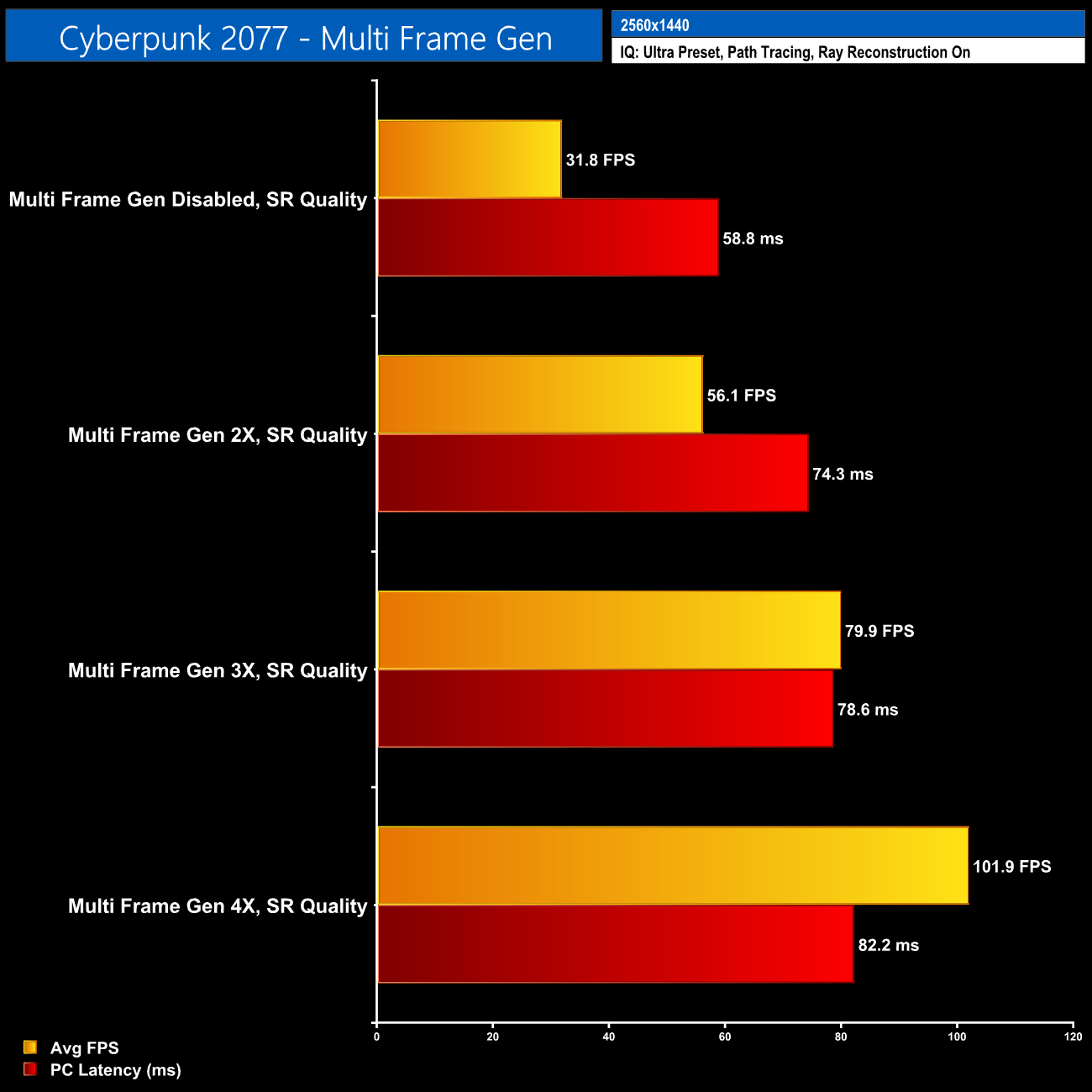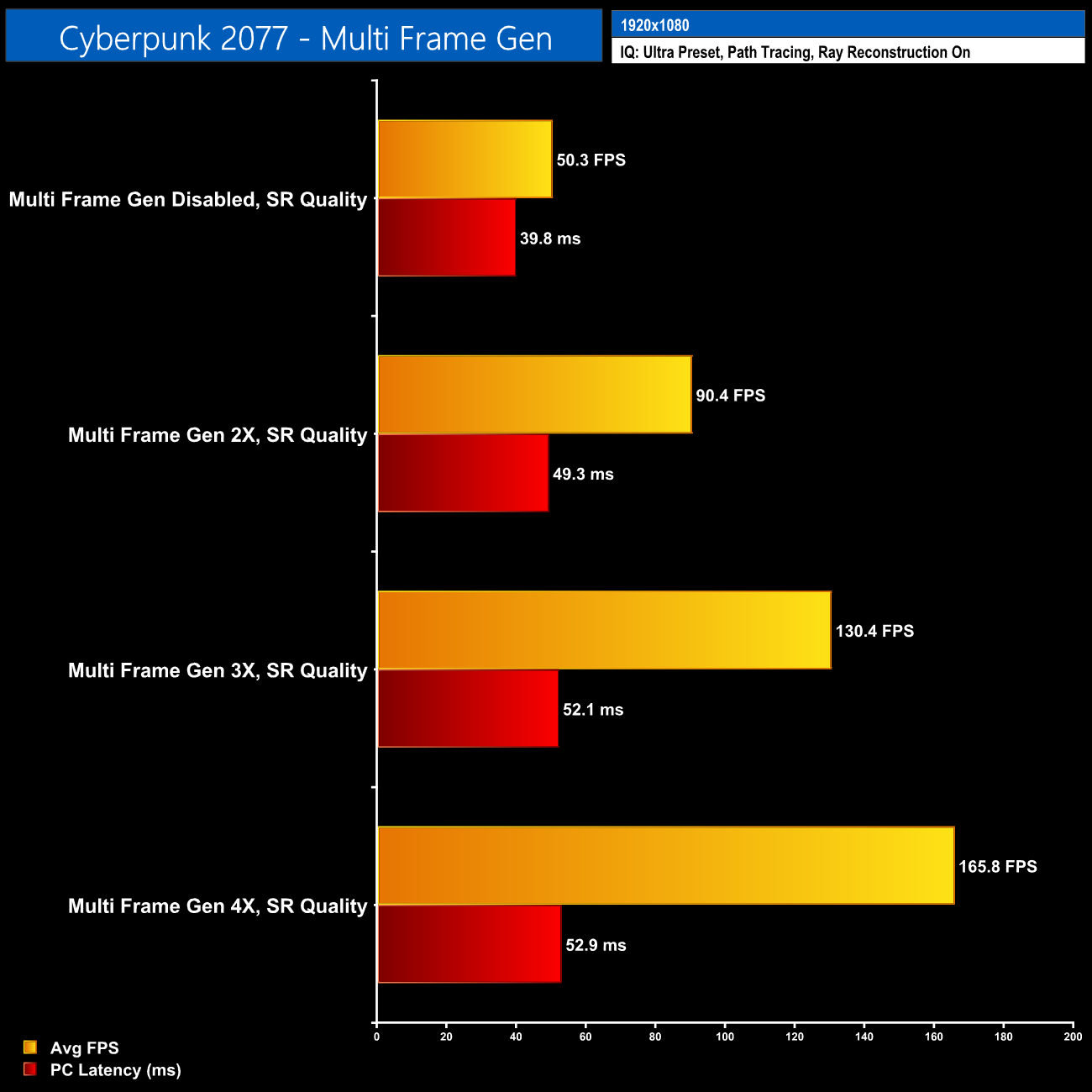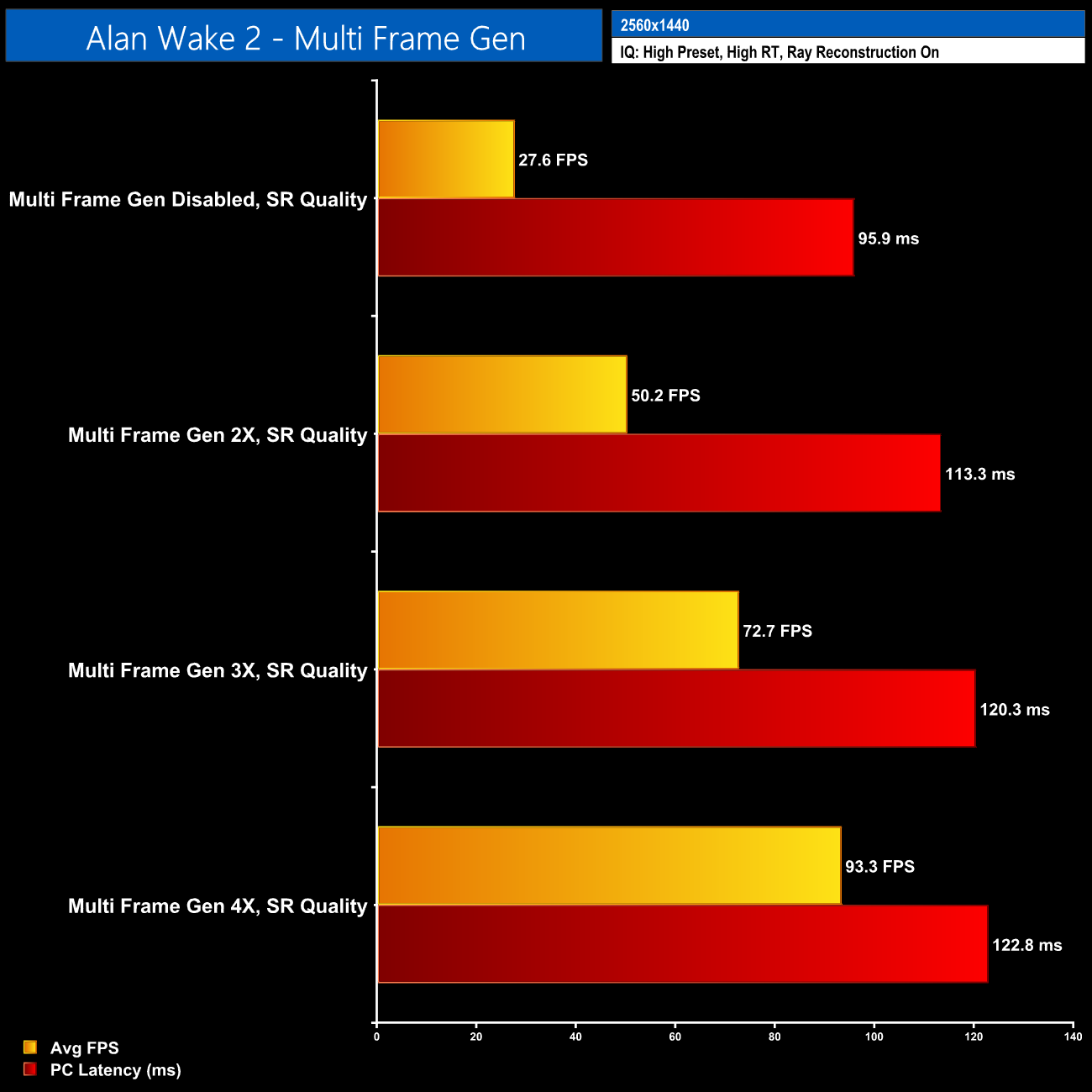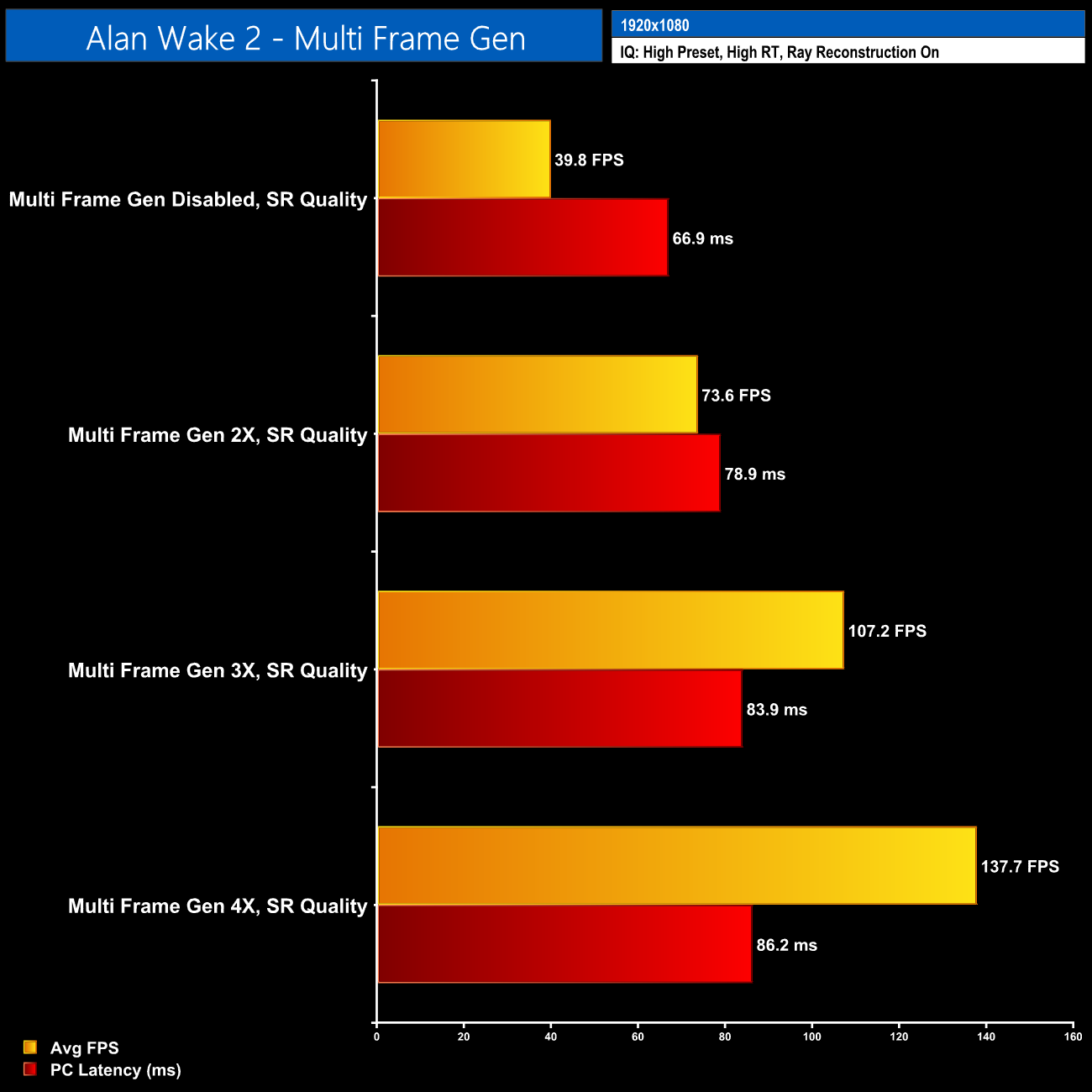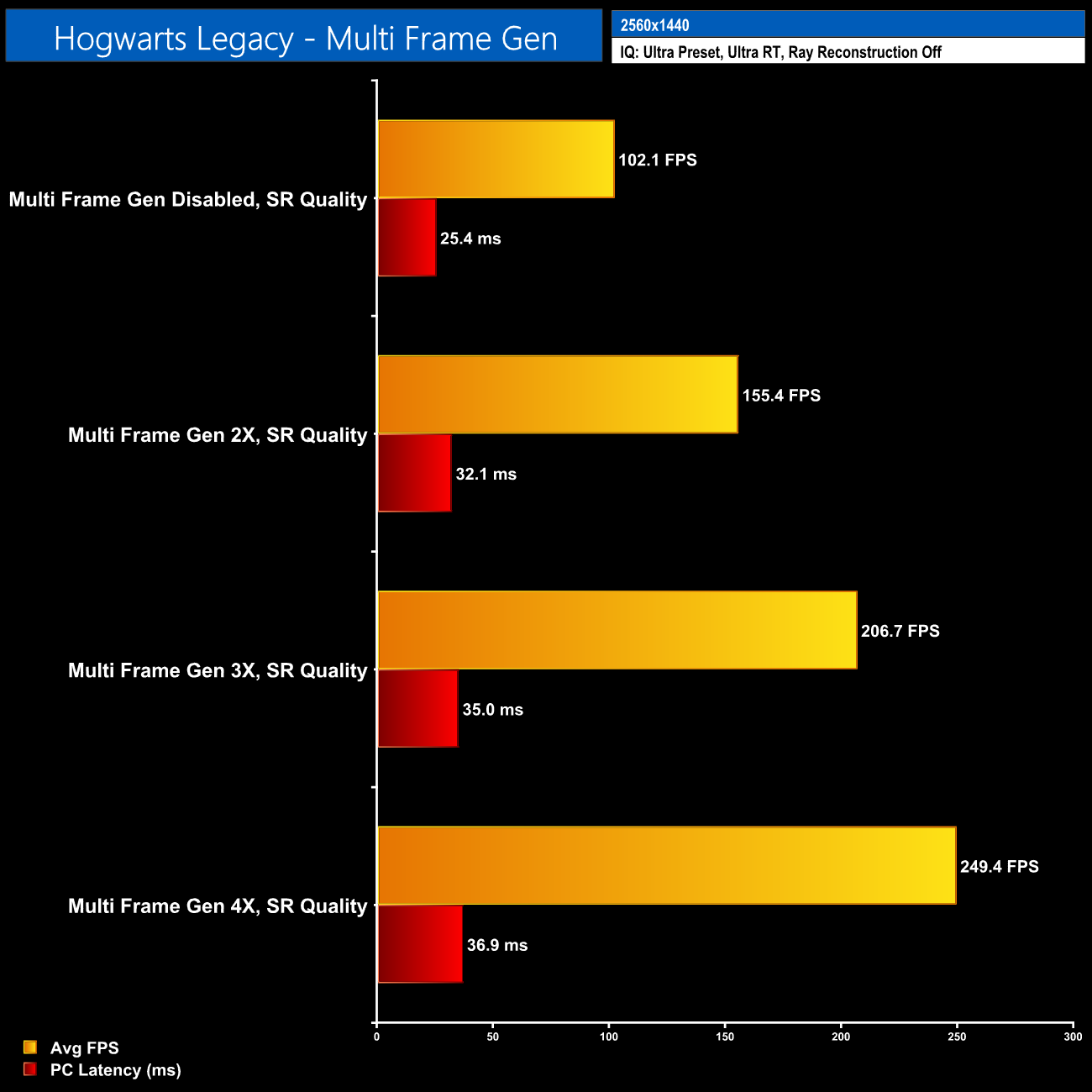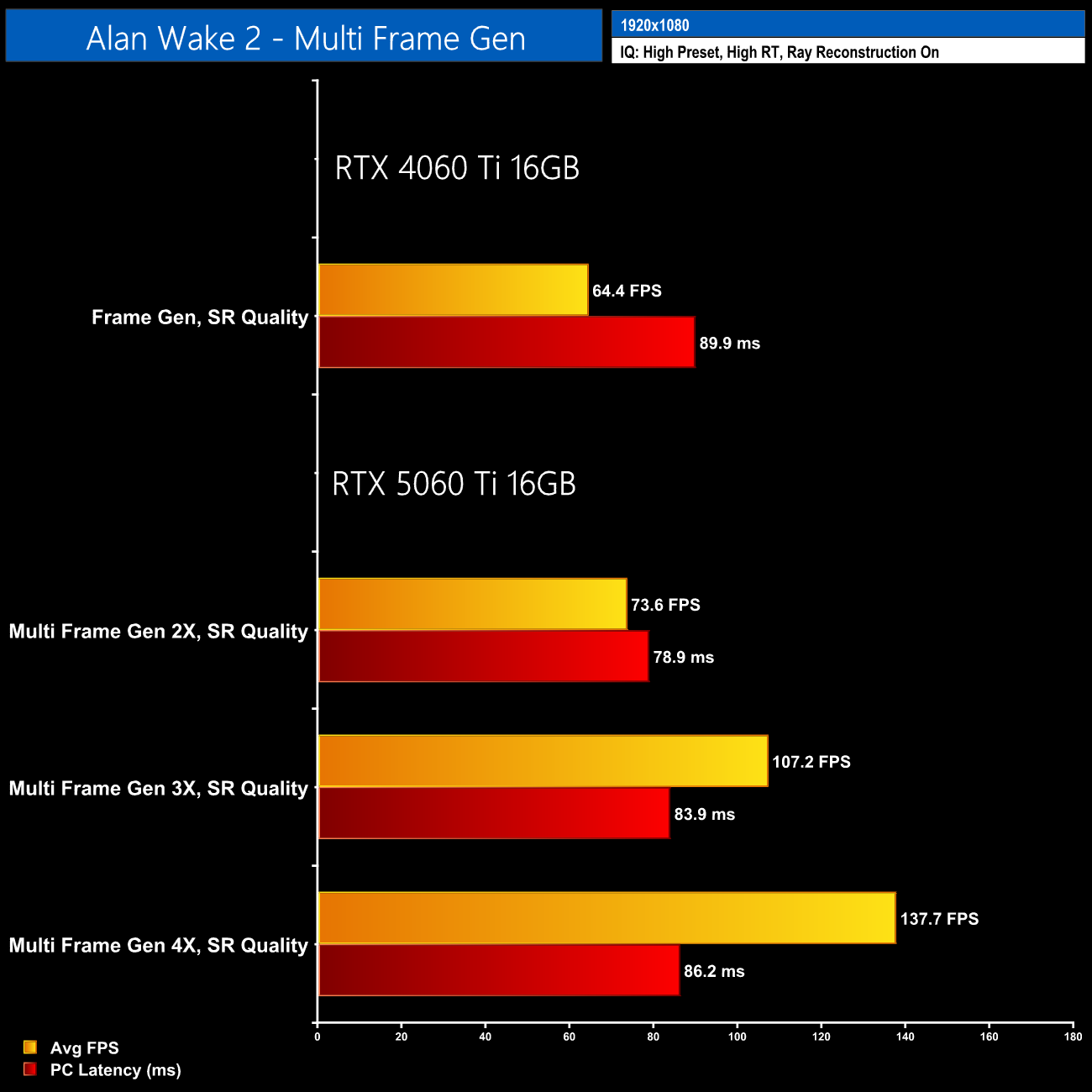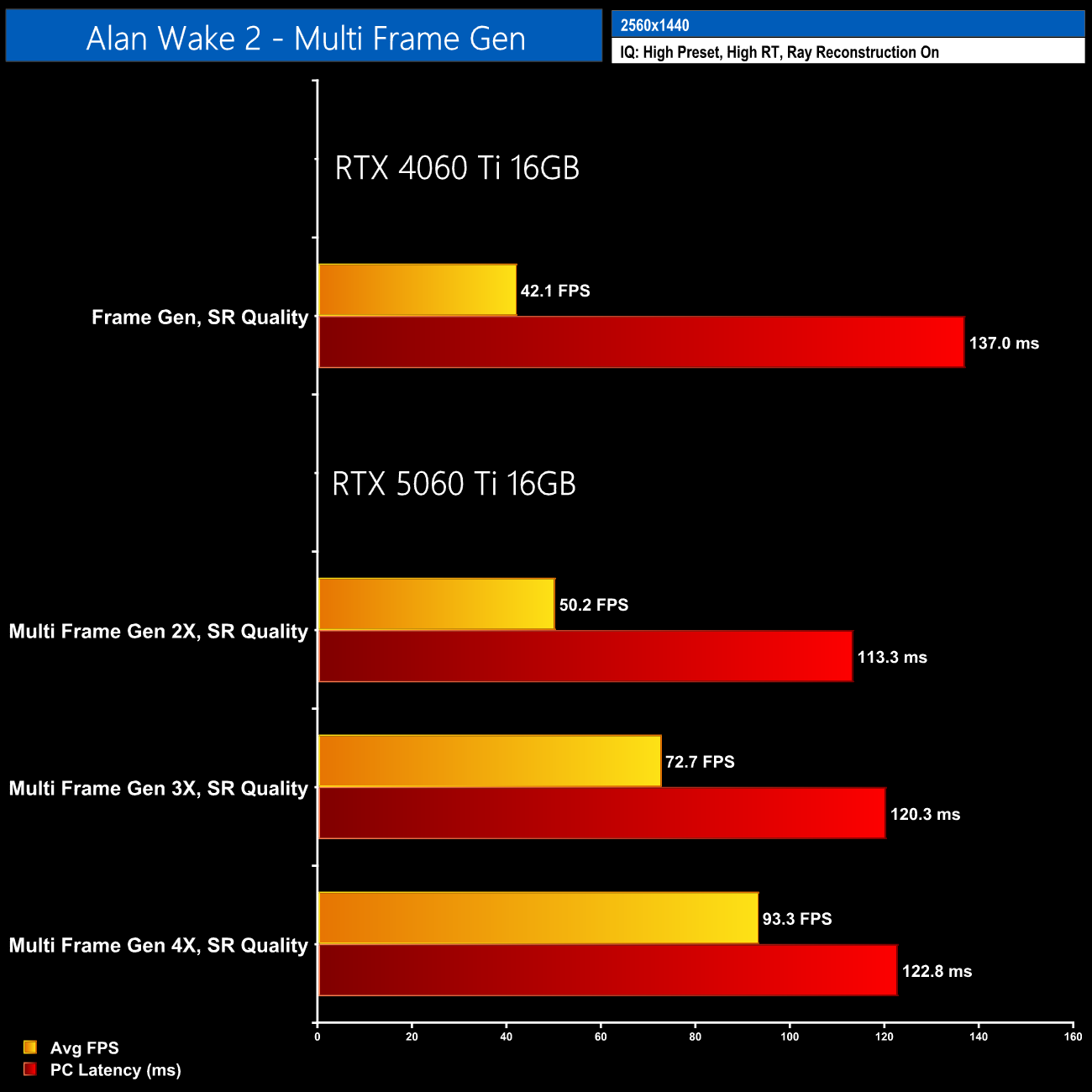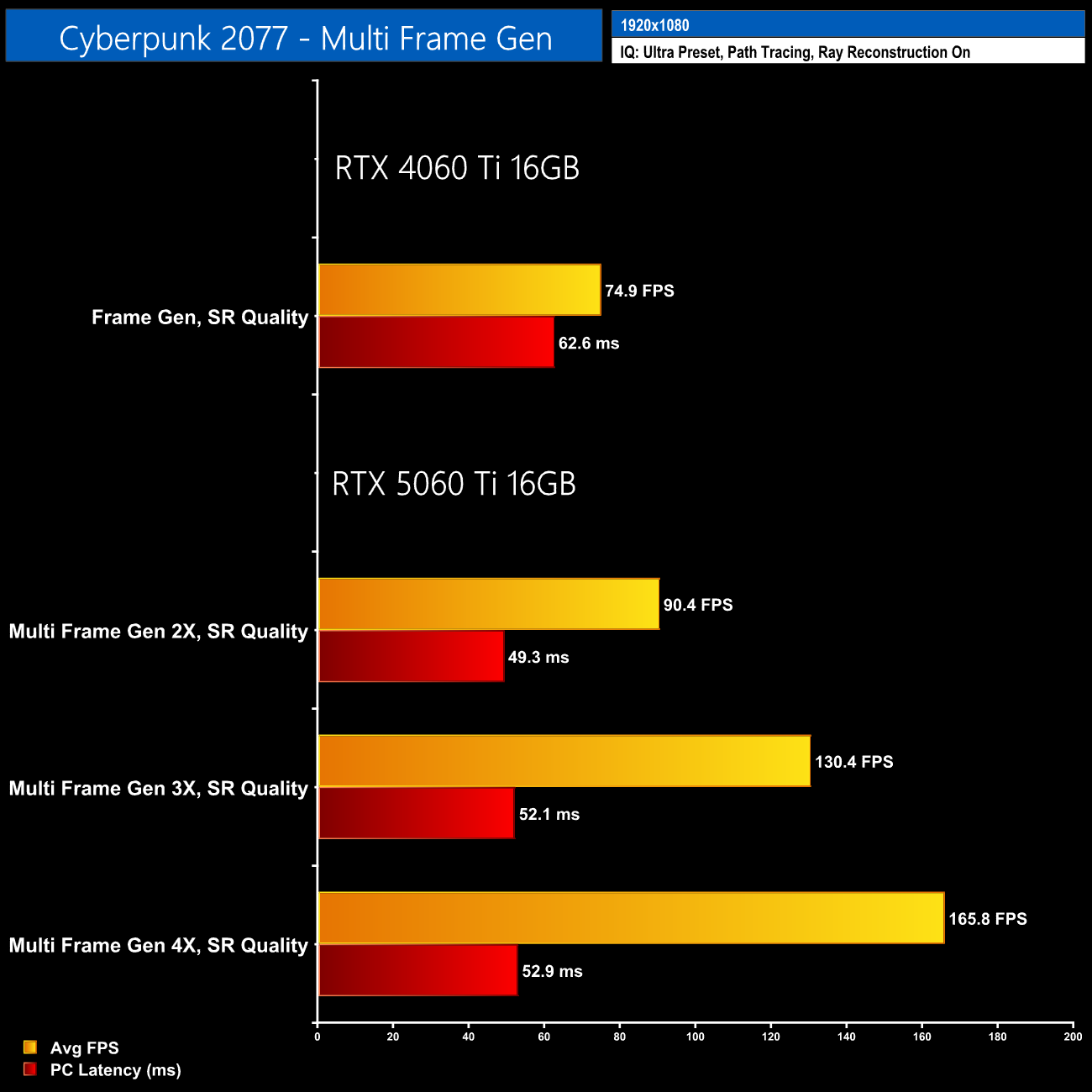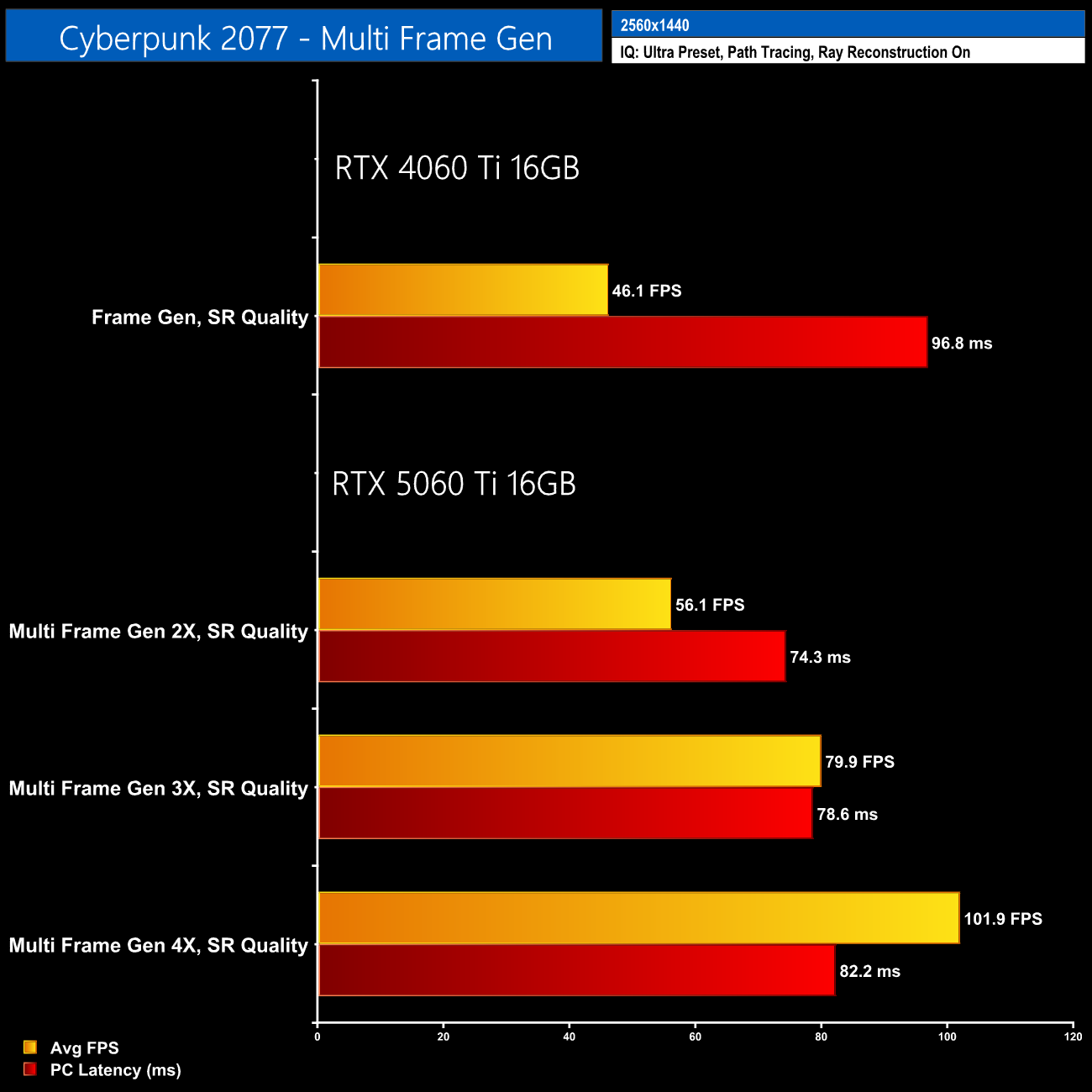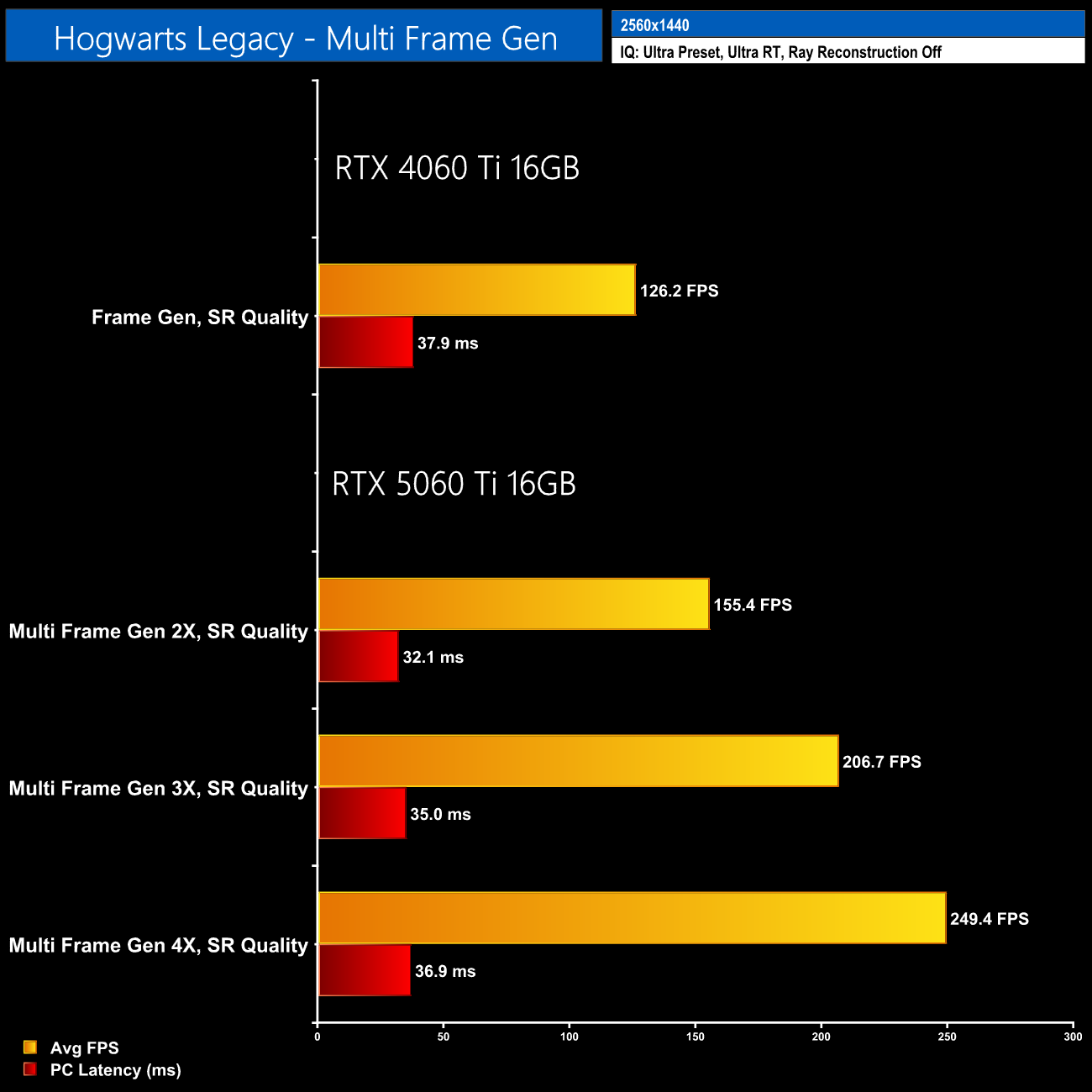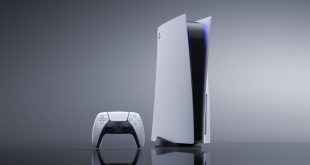DLSS Multi Frame Generation
Next, we give a few examples of the sort of frame rates – and latency numbers – you can expect when using Multi Frame Generation (MFG) with the RTX 5060 Ti 16GB.
In regards to DLSS 4 Multi Frame Generation, I do want to point out what I believe to be some misleading marketing from Nvidia. The announcement presentation for the RTX 5060 Ti 16GB showed frame rates and latency for the GPU running Cyberpunk 2077 at 1440p, DLSS Quality mode, but with path tracing enabled. Using MFG 4X, Nvidia claimed 108fps and 81ms latency, and my own numbers actually aren't too far off that.
However, the numbers taken in isolation really lack context, and I do not think playing path traced games at 1440p with MFG 4X is a good idea on this GPU. For one, latency is silly high given the starting base frame rate is so low – given we averaged 102fps using MFG 4X, simple maths tells us only 26 of those frames were traditionally rendered, so that is a very low frame rate to start from.
On top of that, the numbers alone only tell half the story, as MFG is very much a visual technology. With only 26 ‘real' frames for every three AI generated frames, visual errors like ghosting and image garbling become very obvious – just check out our video review to see some examples.
1080p is a much more realistic use case for MFG, as the base frame rate will be that much higher – here we topped out at 53ms of latency, with 42 ‘real' frames being rendered using MFG 4X, which is more playable.
The same goes in Alan Wake 2 – 1440p with path tracing is just too much for this calibre of GPU, even with DLSS Quality, so when you add MFG on top, the latency increases to over 120ms.
At 1080p, though, things are more manageable. The base frame rate is still fairly low at 40fps, so you may even want to consider DLSS Balanced or even Performance, but it's a better experience than 1440p.
Of course, some games are much easier to run, such as Hogwarts Legacy, where even with everything maxed out at 1440p, you'll get a good experience on the 5060 Ti 16GB. Here we have a starting frame rate of 102fps before enabling MFG, so latency never really becomes a problem. That's something to keep in mind with MFG – it is a technology I quite like and use often for my personal gaming sessions. But you have to be realistic with the starting frame rate, otherwise latency becomes a real issue, as does the visual quality.
Performance versus RTX 4060 Ti 16GB
We also re-tested the RTX 4060 Ti 16GB in these games, being an Ada GPU, it is limited to using ‘Frame Generation' instead of ‘Multi Frame Generation', i.e. the insertion of one AI-generated frame rather than up to three on the RTX 50 series. As such, that means you can get significantly higher frame rates with the 5060 Ti 16GB – roughly twice the frame rate. Obviously this is dependent on the game supporting Frame Gen, and these aren’t the raw performance increases we saw earlier in the review, but it’s worth pointing out if MFG is a feature you might value.
 KitGuru KitGuru.net – Tech News | Hardware News | Hardware Reviews | IOS | Mobile | Gaming | Graphics Cards
KitGuru KitGuru.net – Tech News | Hardware News | Hardware Reviews | IOS | Mobile | Gaming | Graphics Cards


